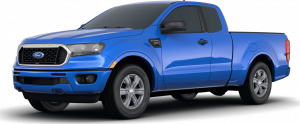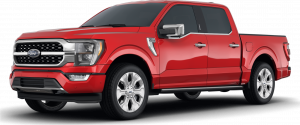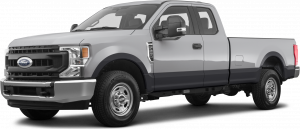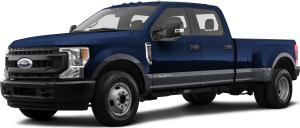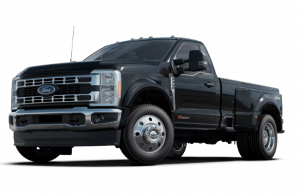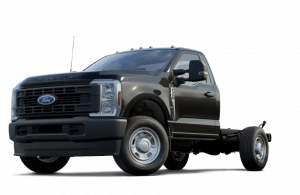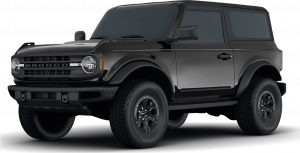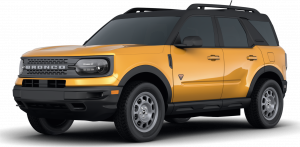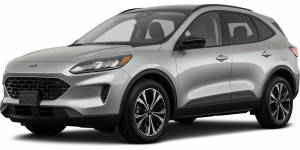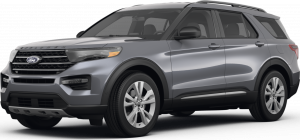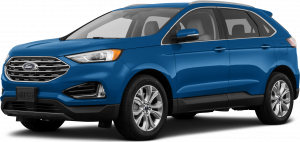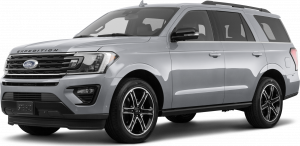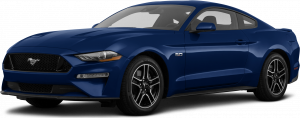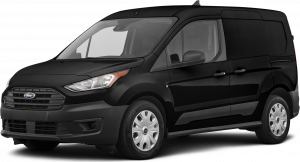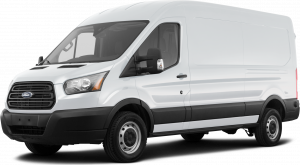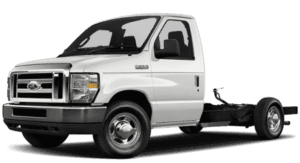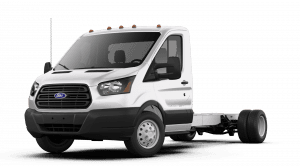Stuck choosing between the Ford Ranger and the Ford F-150? You’re in the right place. In this blog, we’ll provide a side-by-side comparison of these two popular trucks, covering key aspects like pricing, performance, towing capacity, and more.
The F-150 has definitely become a flagship of the Ford make, but the Ranger could be more your speed. From differences in size and power to advanced features, there’s a lot to love about both models. Let’s get you a clear picture of which truck best fits your needs!
Key Decision-Making Criteria for Ford Ranger vs Ford F-150
- The Ford Ranger is more budget-friendly with lower upfront costs and better fuel economy, making it ideal for casual truck users.
- The baser model of the Ranger costs just over $51,000, while the F-150 starts at over $57,000
- The cost to own a Ford F-150 XL Regular Cab is about $14,000 per year, whereas the new Ford Ranger XL SuperCrew 4WD costs over $10,000 per year.
- The 2.3 L Ford Ranger has a fuel consumption rate of 10.7 L/100km, making it a more fuel-efficient option. On the highway it consumes 9.8L/100km.
- In contrast, the smaller displacement Ford F-150 2.7 L has a higher fuel consumption rate of 11.8 L/100km, which increases to 12.4 L/100km when you opt for the 3.5 L V6 turbo.
- For the Ford Ranger, torque is best for towing, with the truck’s highest torque rating reaching up to 400 lb ft with the 2.7 L. Its base engine tows up to 7,500 lb.
- The Ford F-150 stands out with its higher horsepower and torque options, with the most powerful engines delivering up to 570 lb ft of torque with the 3.5 L in particular—and 14,000 lb of towing capacity.
- A used Ford Ranger is considered the best model year in terms of value, retaining 75% of its value after leasing for 3 years.
- Ultimately, your choice between the Ranger and F-150 should reflect your specific needs—whether it’s cost-effectiveness and light duties or versatility in both power and premium features.
Pricing
The Ford Ranger offers a lower entry price point compared to the Ford F-150, making it an attractive option for budget-conscious buyers. Whereas the baser model of the Ranger costs just over $51,000, the F-150 starts at over $57,000; the lower starting price of the Ranger makes it easier to get into a capable truck without breaking the bank.
While the Ranger is more affordable upfront, the F-150 may provide better overall value for those who need the greatest capabilities out of their trucks. On-road costs for the Ford F-150 are significantly higher due to its larger size and capacity—not the least of which are due to differences in the engine!
Powertrain Options and Performance
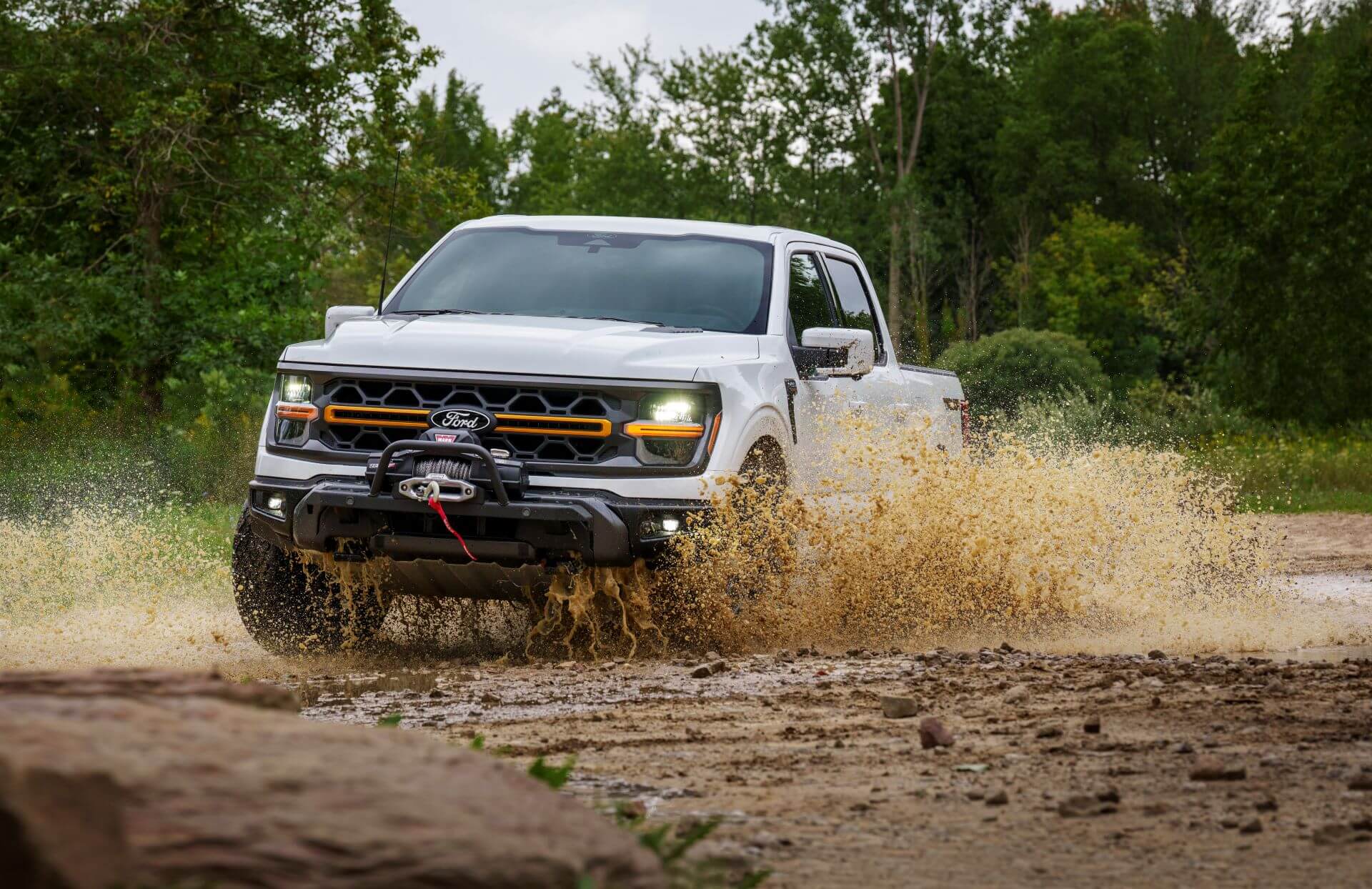 Experience the thrill of off-roading with the Ford Ranger! Our knowledgeable sales advisors at Universal Ford are here to help you explore how close you are to performance and adventure-ready capabilities of this midsize pickup.
Experience the thrill of off-roading with the Ford Ranger! Our knowledgeable sales advisors at Universal Ford are here to help you explore how close you are to performance and adventure-ready capabilities of this midsize pickup.
The engines of the new Ford Ranger and Ford F-150 are a powerful part of a range of powertrain options to suit various driving needs. The Ranger features a turbocharged engine that provides excellent torque and fuel efficiency, making it versatile for both city and off-road driving.
Meanwhile, the F-150 offers multiple engine specs catering to heavy-duty tasks and everyday use. Advanced features like Pro Power Onboard for stationary power needs and an intuitive infotainment system further enhance the F-150’s performance and driving experience.
Engine Varieties
The Ford Ranger offers various engine options, including both petrol and diesel variants, enhancing its adaptability for different driving scenarios. The new Ford Ranger includes a 2.3 L EcoBoost® engine, upgradable to 2.7L EcoBoost® V6 in Lariat trim, balancing power and fuel efficiency, making it a versatile choice for many drivers.
On the other hand, the Ford F-150 features a broader range of engine choices. Its base engine is a reliable 2.7 L EcoBoost® V6, designed for everyday performance. For those seeking more power, the F-150 offers options up to a turbocharged 3.5L EcoBoost® V6, and a robust V8, catering to a wide spectrum of performance requirements. The F-150 definitely stands head and shoulders above the others of Ford’s best trucks for its versatility!
Torque and Horsepower
Torque and horsepower significantly impact a truck’s performance, especially in acceleration and towing capabilities. For the Ford Ranger, torque plays a crucial role in towing, with the truck’s highest torque rating reaching up to 400 lb ft with the 2.7 L, enhancing its towing and hauling capabilities.
In comparison, the Ford F-150 stands out with its higher horsepower and torque options. With engines delivering up to 570 lb ft of torque with the 3.5 L, the F-150 offers superior performance metrics for those needing extra power for demanding tasks. This makes the F-150 a performance powerhouse, emphasizing its superiority over the Ranger.
Towing and Payload Capacities
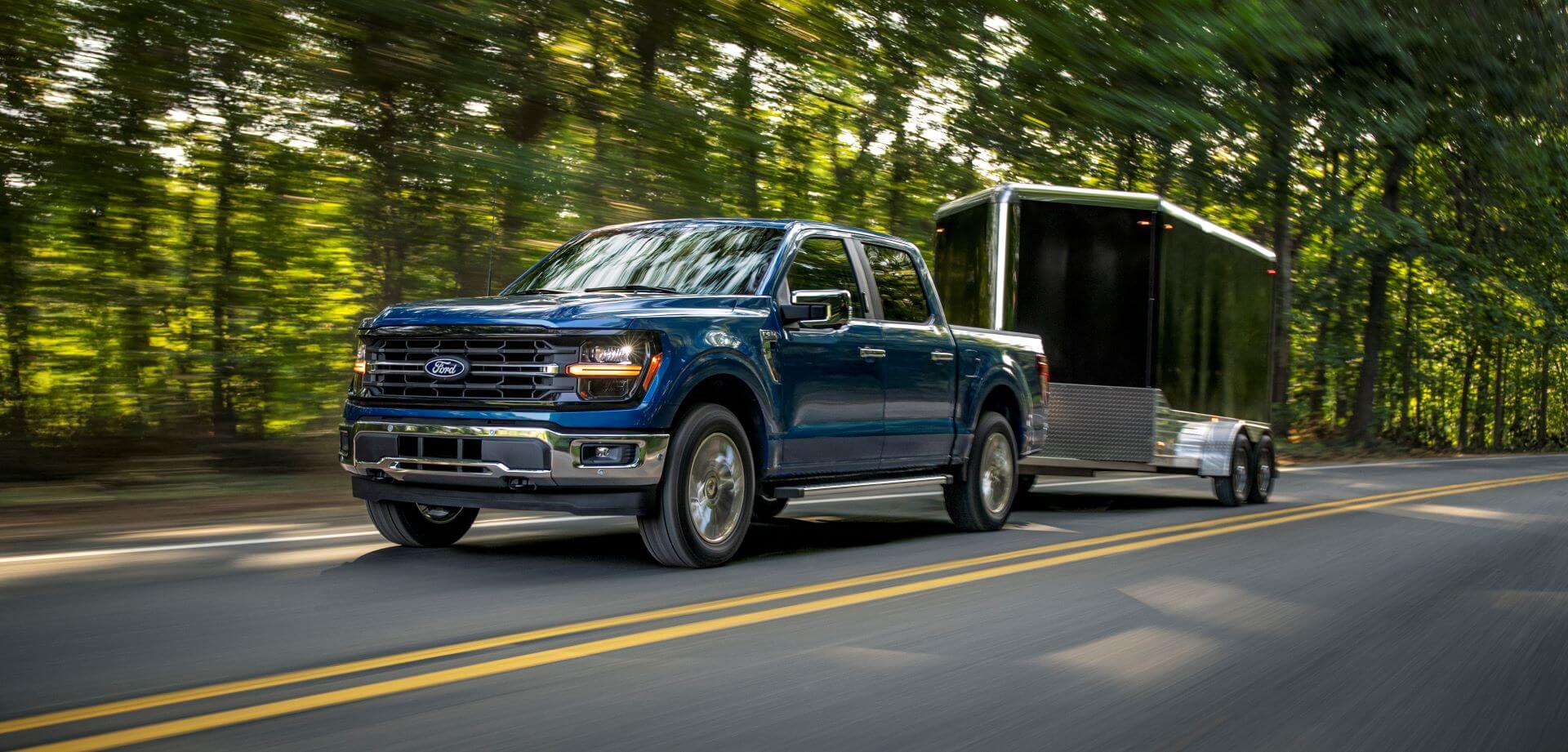 Discover the power and versatility of the Ford F-150! With a maximum towing capacity of up to 14,000 lbs, this truck is built to handle your toughest jobs. Our expert sales advisors at Universal Ford are ready to help you experience the impressive towing capacity and smooth performance of this iconic truck.
Discover the power and versatility of the Ford F-150! With a maximum towing capacity of up to 14,000 lbs, this truck is built to handle your toughest jobs. Our expert sales advisors at Universal Ford are ready to help you experience the impressive towing capacity and smooth performance of this iconic truck.
In terms of towing and payload capacities, the Ford F-150 leads with an impressive maximum towing capacity of 10,000 lbs when equipped with the Max Trailer Tow Package. The integrated Trailer Brake Controller in the F-150 allows precise adjustment of power to the trailer brakes, enhancing control and safety while towing.
The Ford Ranger in its regular 2.3 L engine, with its considerable torque rating of up to 369 lb ft, is also a strong contender in its class for towing. However, the payload capacities differ significantly, with the Ranger’s maximum towing capacity being 7,500 lb, while the F-150 can tow 10,100 lb with a base engine when towing at full capacity.
These differences highlight the F-150’s superior towing capabilities, making it a better choice for heavy-duty tasks. And with better engine specs, the F-150’s towing capacity gets better and better, to a max of 14,000 lb.
Interior Space and Comfort
Interior space and comfort are vital when choosing a truck, especially for those who spend long hours behind the wheel or travel with passengers. Both the Ford Ranger and F-150 aim to provide a comfortable and spacious environment, but there are notable differences.
Front and Rear Leg Room
The Ford F-150 offers slightly more front legroom than the Ranger, with a maximum of 43.9 inches compared to the Ranger’s 43.1 inches. This extra space can significantly improve driver comfort, especially on longer journeys. Legroom is essential for both drivers and passengers, ensuring everyone has ample space to stretch out and relax.
Rear legroom is also important. The Ford F-150 generally provides more space for rear passengers, making it a more comfortable option for those who frequently travel with multiple occupants. The Ranger, while adequate, has a more compact rear seating area, potentially making it less suitable for long trips.
Head Room and Shoulder Room
Headroom and shoulder room are also crucial for passenger comfort. The Ford F-150 excels here, offering rear head room of 40.4 inches (in SuperCrew) compared to the Ranger’s 38.3 inches. This extra space benefits taller individuals, providing a more comfortable ride.
Shoulder room is equally important to prevent passengers from feeling cramped. The F-150 again leads with more generous dimensions, making it a more spacious option overall.
These aspects highlight the F-150’s emphasis on passenger comfort, making it an excellent choice for those who prioritize interior space.
Technology and Infotainment Systems
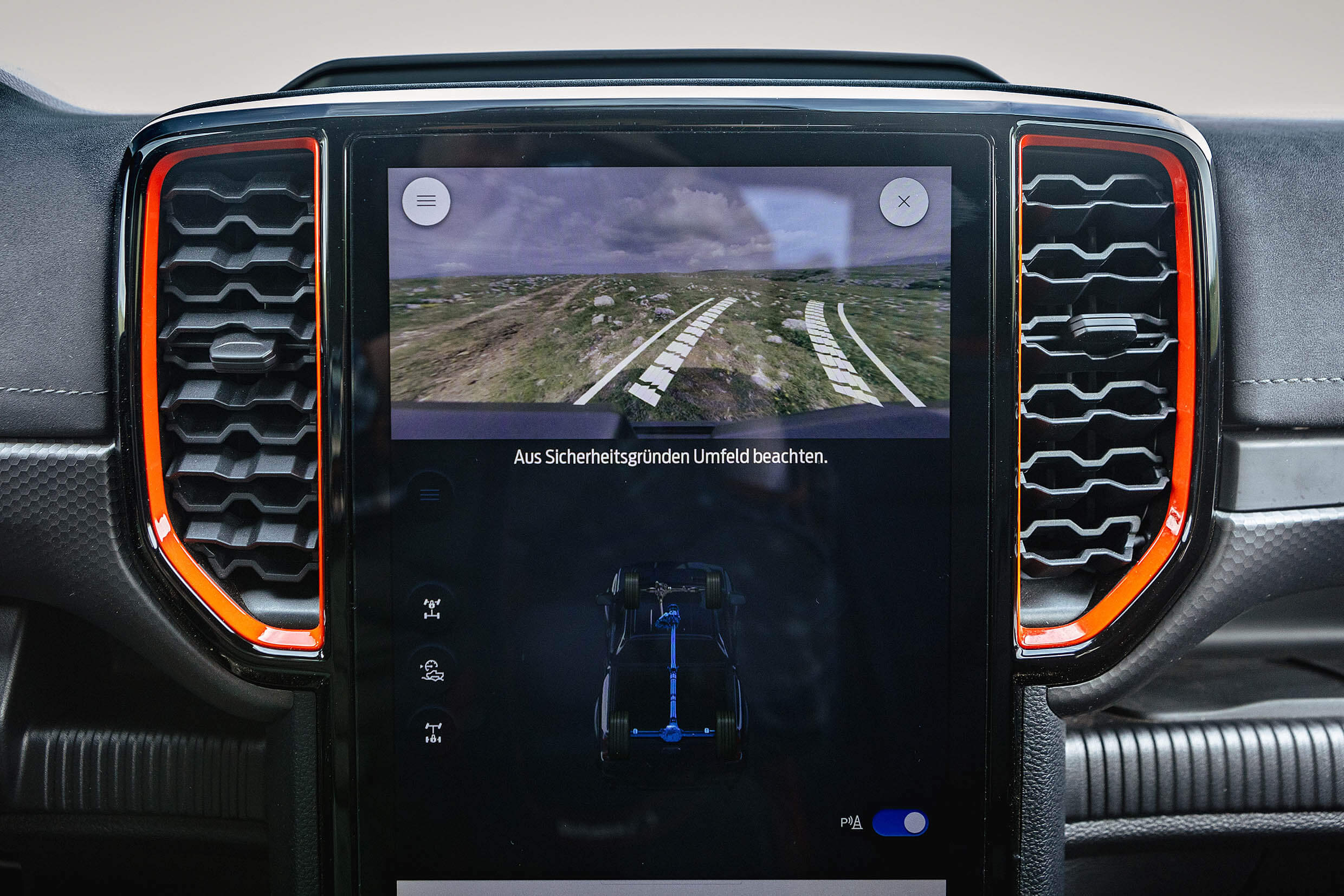 Experience cutting-edge technology with the Ford Ranger’s impressive 12.4-inch infotainment screen, larger than the one in the F-150. Our knowledgeable sales advisors are here to help you explore this advanced feature and more. Come in for a test drive and see the difference in size for yourself!
Experience cutting-edge technology with the Ford Ranger’s impressive 12.4-inch infotainment screen, larger than the one in the F-150. Our knowledgeable sales advisors are here to help you explore this advanced feature and more. Come in for a test drive and see the difference in size for yourself!
Modern trucks are increasingly becoming mobile tech hubs, and the Ford Ranger and F-150 are no exceptions. The Ford Ranger has a 12.4-inch touchscreen, while the F-150 features a slightly smaller 12-inch touchscreen. Despite the size difference, both vehicles utilize Ford’s SYNC 4 infotainment software, ensuring a similar user experience.
Connectivity features in both trucks include Apple CarPlay, Android Auto, and Bluetooth, ensuring easy connectivity on the go. The Ford Ranger has 5 USB ports, whereas the F-150 offers 8, providing ample options for charging devices.
These advanced infotainment systems enhance the driving experience by integrating essential modern technology.
Safety Features
Safety is a paramount concern for any vehicle, and both the Ford Ranger and F-150 come with a range of features designed to protect occupants. The Ford Ranger’s Cross Traffic Alert system warns drivers of approaching vehicles from the side when reversing, enhancing safety during maneuvers. And the reverse brake assist feature automatically applies brakes when obstacles are detected, preventing collisions.
The next-gen Ford Ranger includes a far-side airbag to reduce impact between front occupants during a collision. Additionally, the post-collision braking system engages brakes automatically to lessen the risk of secondary impacts after an initial crash.
These safety features, along with adaptive cruise control and a blind spot information system, make the Ranger a safe and reliable choice. For even more advanced safety, Ford Co-Pilot360® is something to look forward to, especially if you’re thinking of an electrified F-150, i.e. the Ford F-150 Lightning.
The Ford F-150 has earned the IIHS Top Safety Pick award in recent years for models equipped with specific headlights. The Ford Ranger is an entry to keep an eye on in ratings for future Top Safety Pick awards.
Off-Road Capabilities
For off-road enthusiasts, the Ford Ranger comes with various features that enhance its capabilities. The Terrain Management System adjusts performance for various surfaces like mud, sand, and rocky trails, ensuring optimal performance in different conditions.
The Electronic Locking Rear Diff improves traction by synchronizing the rear wheels during off-road conditions, while Trail Control maintains a consistent speed over obstacles, letting drivers focus on steering.
Hill Descent Control, available in both models, automatically manages speed during steep descents, reducing the risk of rollovers. Underbody skid plates protect the underbody from damage, and off-road tires enhance traction on uneven terrain.
For a more specialized off-road experience, the Ford Ranger Raptor combines speed and agility with its wide stance and advanced suspension, making it easier to navigate narrow trails.
Fuel Economy and Driving Range
Fuel economy is crucial for many truck buyers, and the Ford Ranger and F-150 offer different performance in this area. The 2.3 L Ford Ranger has a fuel consumption rate of 10.7 L/100km, making it a more fuel-efficient option. On the highway the Ranger consumes 9.8L/100km, matching the F-150.
In contrast, the smaller displacement Ford F-150 2.7 L has a higher fuel consumption rate of 11.8 L/100km, which increases to 12.4 L/100km when you opt for the 3.5 L V6 turbo. The Ranger can go 605 kilometres in 2.7 L, contributing to a respectable driving range.
But the 3.5 L F-150 can go up to 1101km thanks to a bigger tank. These figures highlight the Ranger’s superior fuel economy, making it a more economical choice for those concerned with on-road costs.
Cargo and Storage Solutions
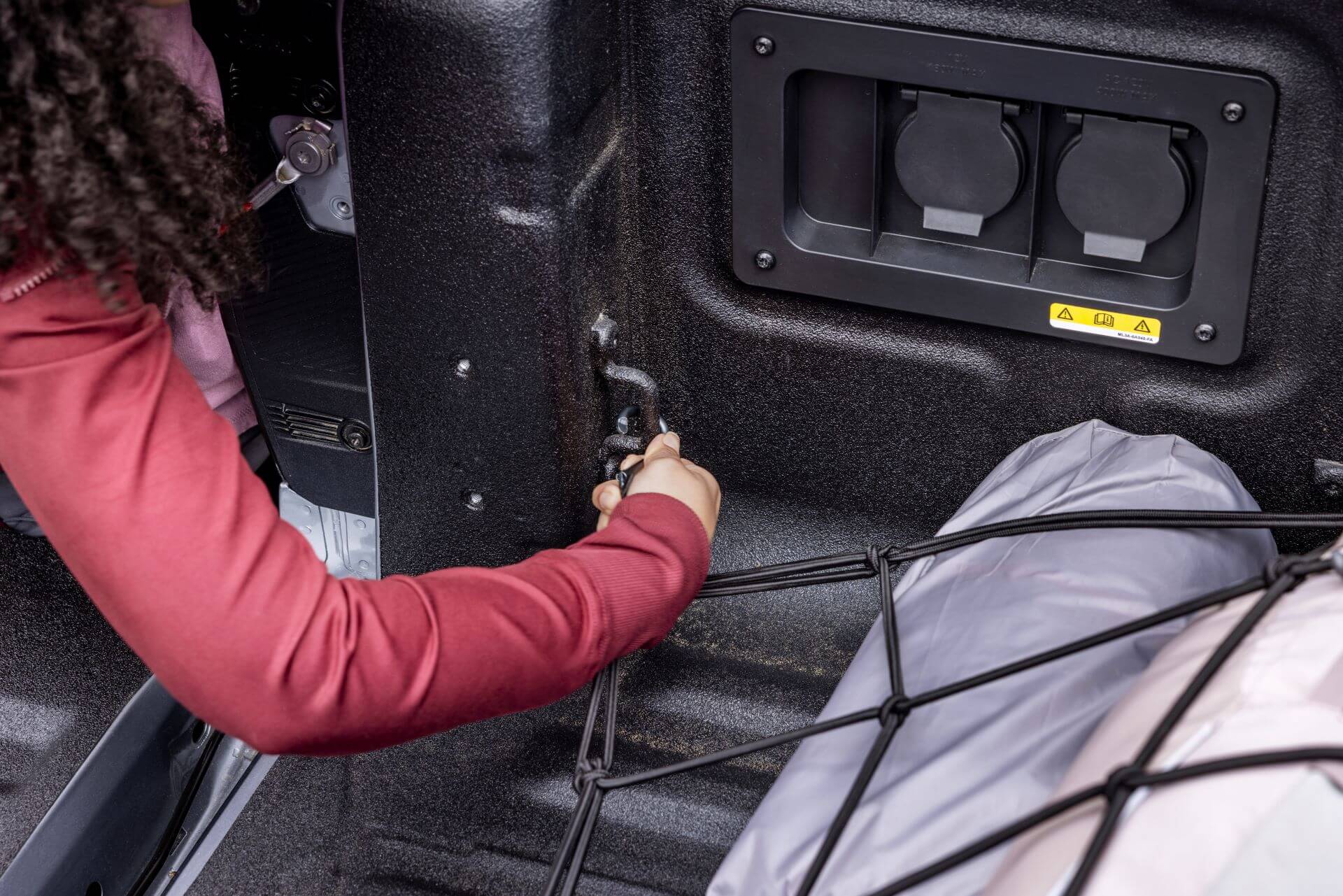 The Ford Ranger’s cargo area is equipped with 400w outlets, perfect for powering tools or devices on the go, and webbing with cargo hooks to keep your items secure. These features make the Ranger a versatile and practical choice for both work and adventure. We have to give the Ranger the edge here!
The Ford Ranger’s cargo area is equipped with 400w outlets, perfect for powering tools or devices on the go, and webbing with cargo hooks to keep your items secure. These features make the Ranger a versatile and practical choice for both work and adventure. We have to give the Ranger the edge here!Cargo and storage solutions are essential for any truck owner, and the Ford Ranger and F-150 offer innovative features to meet diverse needs.
The Ranger features a 400 W outlet in the truck bed for powering multiple devices like lighting sets and 120V power bars for multiple devices like phones and laptops, along with LED bed lighting to assist with loading in low-light conditions. On the other hand, the Ford F-150 has Pro Power Onboard, for multiple outlets that can be 120V or 240V configurations.
The Ranger also features integrated tie-downs and sliding cleats in the Ranger’s cargo box allow for secure cargo management.
The Ford F-150 includes a lockable storage box under the rear seat, large door bins, and a fold-down armrest with cup holders, providing additional storage solutions. Both the Ranger and F-150 offer practical cargo features designed for ease of use and functionality, catering to a wide range of user needs.
Long-Term Ownership Costs
Long-term ownership costs include both maintenance and insurance expenses. The estimated maintenance and repair costs for a used Ford F-150 over its first decade aren’t something to ignore, but there’s always residual value. A used Ford Ranger is considered the best model year in terms of value, retaining 75% of its value after leasing.
Despite higher initial and running costs, the F-150 generally retains a higher resale value compared to the Ford Ranger, which can be a big factor for long-term owners seeking maximum return on their investment. The cost to own a Ford F-150 XL Regular Cab is about $14,000 per year, whereas the new Ford Ranger XL SuperCrew 4WD costs about $10,000 per year to run all in.
Which Truck is Right for You?
Deciding between the Ford Ranger and Ford F-150 depends on your specific needs, driving environment, and long-term ownership plans. If you prioritize a lower entry price and better fuel economy, the Ford Ranger may be the better choice. It’s a practical option for those needing a versatile truck without the added bulk and cost of the F-150.
It’s a tough choice, but perhaps easier to make than the choice between the Ranger and Maverick; ultimately if you require more power, towing capacity, and interior space, the Ford F-150 stands out as the superior choice. It offers a broader range of engine options, higher horsepower, and torque, making it ideal for heavy-duty tasks. But it’s got the associated costs, upfront and down the road.
Additionally, the F-150’s higher resale value (higher according to our used inventory) and advanced safety features make it a wise investment for long-term ownership. So, which truck will you choose to conquer your next adventure?
Visit Universal Ford to Test Drive the Ranger and the F-150 Today!
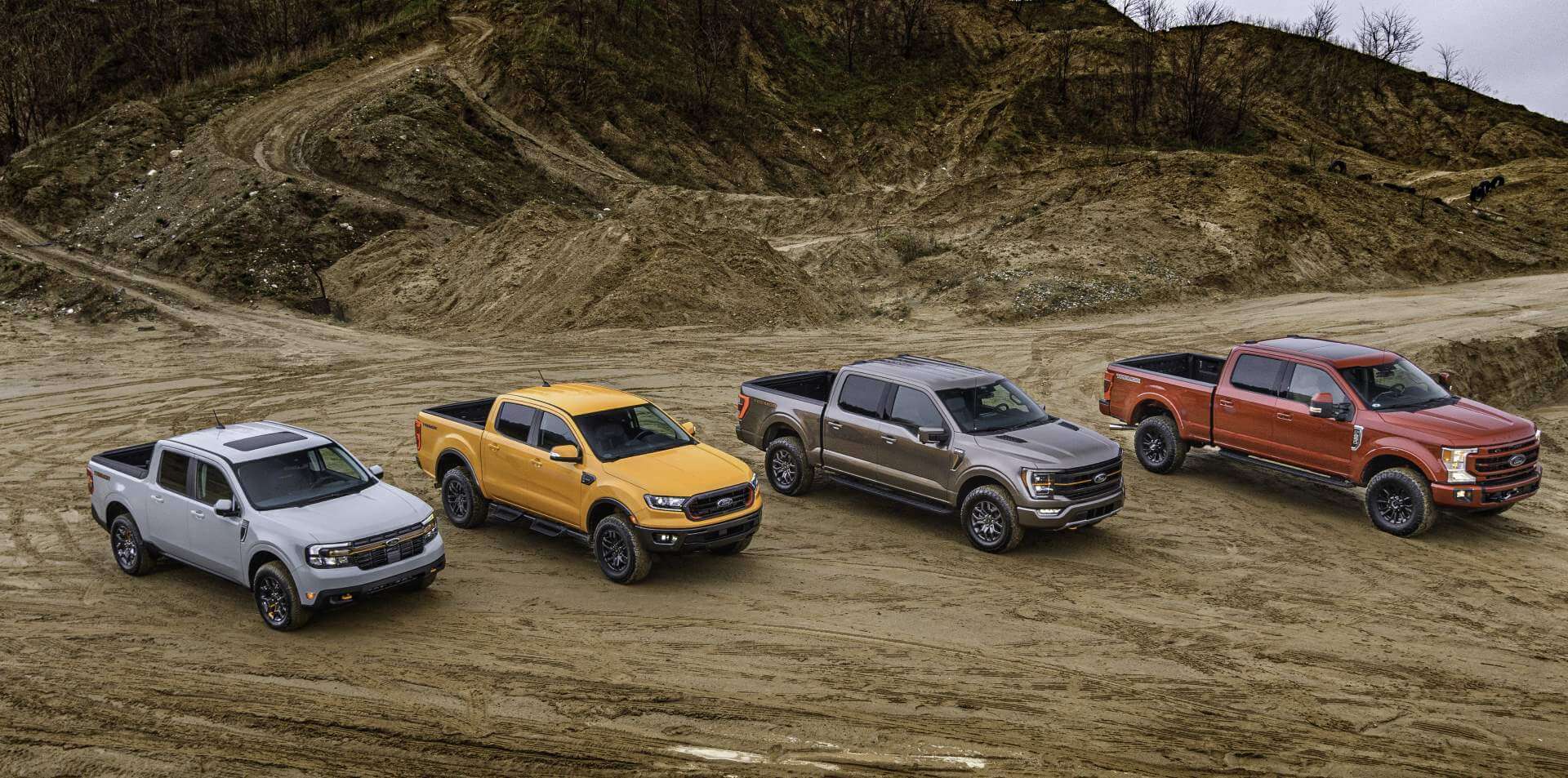 When choosing between the Ford Ranger and the Ford F-150 in Tremor trim, consider factors like size, payload capacity, off-road capabilities, and price. Ultimately, scheduling a test drive is the best way to determine which truck suits your needs.
When choosing between the Ford Ranger and the Ford F-150 in Tremor trim, consider factors like size, payload capacity, off-road capabilities, and price. Ultimately, scheduling a test drive is the best way to determine which truck suits your needs.
Ultimately, the decision comes down to your specific requirements and preferences. Whether you choose the Ford Ranger or the Ford F-150, both trucks promise to deliver a reliable and enjoyable driving experience. Plus, our flexible financing options can help make your dream truck more affordable.
Ready to experience the power and performance of Ford’s top trucks? Book back-to-back test drives of the Ford Ranger and Ford F-150 today! Feel the torque, test the towing capabilities, and see firsthand why these trucks are leaders in their class. Schedule your test drives now and get ready to make the choice that’s right for you!
Frequently Asked Questions
Which is better, Ford Ranger or F-150?
Choosing between the Ford Ranger and the Ford F-150 depends on your specific needs. The Ford Ranger is a midsize truck, ideal for those who need a versatile and agile vehicle with standout infotainment screen and practical cargo features. Better, for you, might mean lighter and feature-rich.
On the other hand, the Ford F-150 offers greater towing capacity and more power, making it suitable for heavy-duty tasks and versatile specs. It may also last you longer! Both trucks have their strengths, so the best way to decide is to schedule a test drive at our Calgary dealership and experience them firsthand. For many, it comes down to costs.
If residual value is your concern, the Ranger is better pound for pound, but neither hold superior resale value quite like the Ford Bronco; it’s a similarly a tough choice to make much like the one between the Ford Bronco and Ford Bronco Sport—and resale value is just one part of the equation.
What are the cons of a Ford Ranger?
While the Ford Ranger is a versatile and capable midsize truck, it does have some drawbacks. The ride quality can be a bit unsettled over uneven pavement, and the in-cabin and truck bed storage is less than the F-150.
For those needing more off-road capability or a smoother ride, the Ford F-150 might be a better choice, offering a more refined suspension and advanced features like the Pro Power Onboard generator for a longer lasting power station.
How long will a Ford Ranger engine last?
A well-maintained Ford Ranger engine can last between 320,000 to 400,000 kilometers. However, if you’re looking for a truck with even greater longevity and power, the Ford F-150 is a strong contender. Its robust build and advanced engineering often allow it to exceed these mileage benchmarks.
On the other hand, a well-maintained Ford F-150 engine can last between 320,000 and 480,000 km. This longevity is due to its robust build and advanced engineering. If you’re looking for a truck with exceptional durability as much as power, the F-150 is a great choice.
To determine which truck best suits your needs, come in for a test drive at Universal Ford in Calgary.


